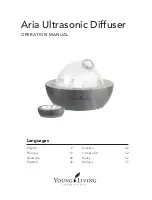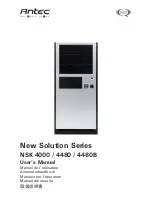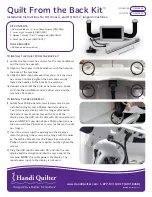
Instructions for use IRONCLAD
®
ENGLISH
Rating Data
1. Nominal capacity C
5
:
See type plate
2. Nominal voltage:
2.0 V x No of cells
3. Discharge current:
C
5
/5h
4. Nominal S.G. of electrolyte* Type PzQ:
1.32 kg/l
5. Rated temperature:
30°C
6. Nominal electrolyte level:
up to electrolyte level mark ”max.”
* Will be reached within the first 10 cycles.
Ignoring the operation instructions, repair with non-original parts, unauthorized modifications or using additives for the
electrolyte will render the warranty void.
1. Commissioning filled and charged batteries
The battery should be inspected to ensure it is in perfect
physical condition; the battery harness has to have reliable
contact and has to be connected with correct polarity.
Otherwise the battery, vehicle or battery charger may be
damaged.
For the assembly of cables and harness cables only use the
original bolts. Attach the harness to the strain release cable
clamp.
Harness and connector bolts should be tightened to the
following torque settings:
M 10 connector
25 ± 2 Nm
Bolts with thread lock may be used up to 5 times. For safety
reasons new bolts with thread lock are recommended.
In case the interval between delivery (see manufacturing date
on type plate) and commissioning is longer than 8 weeks or
the electrolyte level sensor float indicator is indicating low
electrolyte level (see table, point 3.1.1), the electrolyte level
has to be checked. For the removal of the water refilling
plugs, only the appropriate tool must be used. Otherwise,
the floats of plugs may be permanently damaged, which can
cause overflow of the electrolyte. If the electrolyte level is
below the top of the separator, it must first be topped up to
this height with purified water (IEC 62877-1: 2016).
The battery is then charged (see point 2.2). The electrolyte
should be topped up to the specified level with purified water.
2. Operation
EN 62485-3 “Safety requirements for secondary batteries
and battery installations Traction batteries” is the standard,
which applies for the operation of traction batteries in
industrial trucks.
2.1 Discharging
Be sure that all ventilation holes are not sealed or covered.
Electrical connections (e.g. plugs) must only be made or
broken in the open circuit condition. To achieve the optimum
life for the battery, operating discharges of more than 80%
of the rated capacity must be avoided (deep discharge). This
corresponds to an electrolyte specific gravity of 1.14 kg/l at
30°C at the end of the discharge.
Discharged batteries must be recharged immediately and
must not be left discharged. This also applies to partially
discharged batteries.
The discharge indicator on the truck/vehicle must be set
correctly. The setting depends on the discharge indicator
brand and must be equivalent to a discharge with a current
of I
5
to a final voltage of 1.89Vpc for 80% DOD. Please refer
to EnerSys application engineer in case of AGV applications.
2.2 Charging
Only direct current must be used for charging. For IRONCLAD
®
batteries, procedures in accordance with EN 41773-1 and
EN 41774 are permitted.
Connect the battery to an assigned charger, suitable for the
rating and specification of the battery (e.g. cable cross
• Observe operating instructions and display
in a visible place near the battery. Work on
batteries to be carried out by qualified
personal only.
• No smoking! No open flame, embers or
sparks in the vicinity of the battery to avoid
risk of explosion and fire.
• While working on batteries wear protective
eyeglasses and clothing!
• Observe accident prevention regulations as
well as EN 62485-3 and EN 50110-1.
• Acid splashes in the eyes or on the skin must
be washed with plenty of clean water.
• Then consult a doctor immediately!
• Clothing contaminated by acid should be
washed in water.
• Warning of battery hazards.
• Risk of explosion and fire, avoid short circuits.
• Avoid electrostatic charges and discharges/
sparks .
• Electrolyte is highly corrosive!
• Caution! Dangerous electrical voltage!
• Metal parts of the battery are always live;
therefore do not place items or tools on the
battery!
• Only use suitable handling equipment, e.g.
lifting gear in accordance with VDI 3616.
• Cells are very heavy. Make sure they are
installed securely.
• Only use suitable means of transport.























